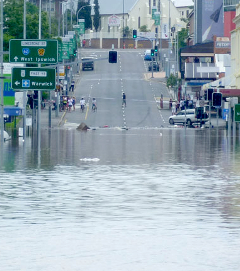Flood costs forecast
 New global modelling has attempted to measure the cost of natural disasters to the world’s roads and railways.
New global modelling has attempted to measure the cost of natural disasters to the world’s roads and railways.
Damage to road and rail infrastructure due to natural disasters could result in annual costs, on average, of approximately US$14.6 billion globally, according to a paper in Nature Communications.
The modelling study suggests around 73 per cent of this damage would be due to surface water (caused by extreme rainfall) and river flooding.
Researchers at the University of Oxford used global road and railway asset data and hazard maps to calculate the exposure and risk to transport infrastructure from natural disasters, including tropical cyclones, earthquakes, surface flooding, river flooding and coastal flooding.
They found that around 27 per cent of global transport infrastructure is exposed to at least one hazard and the cost of global expected annual damages could range from $3.1–22 billion.
They identified that the transport infrastructure of small island developing states, such as Papua New Guinea, are particularly vulnerable to these hazards.
However, although the greatest absolute damages were observed in high income countries, such as China and Japan, middle income countries, such as Georgia and Myanmar, are at higher risk relative to GDP.
The authors argue that it is crucial that countries improve transport planning by including risk information in their assessments. This could help minimise spending on all assets by targeting key improvements to prevent damage from natural hazards.








 Print
Print